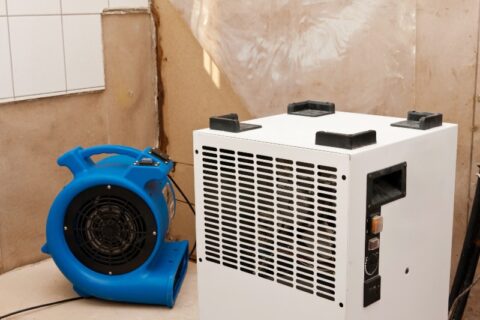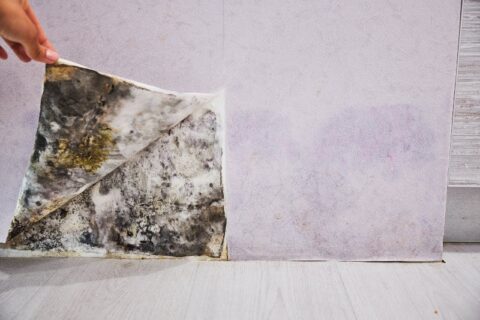How to Fix a Sagging Ceiling Due to Water Damage
Spotting a sagging ceiling in your home might make you do a double take, but don’t panic. Water damage on the ceiling calls for a clear head and immediate action. Find out what can cause a sagging ceiling and how to fix the water damage.
What Makes Your Ceiling Sag?
A sagging ceiling indicates a water leak. Some common culprits include:
- Leaky plumbing: Your pipes are hidden behind the walls and ceilings. Over time, pipes, connections, and hoses can corrode, loosen, or leak for other reasons. When water from these leaks dampens the ceiling, water damage and sagging can occur.
- Roof leaks: Over time, harsh weather conditions, improper installation, or lack of maintenance can lead to roof damage and leaks, allowing water to drip onto the ceiling. As water accumulates, it weakens the ceiling material, causing sagging.
- Flooding: Flood damage, whether from a burst pipe, faulty appliance, or natural disaster, can quickly saturate the ceiling, leading to sagging and potential collapse.
- Condensation: High humidity and poor ventilation, especially in the bathroom and kitchen, can cause condensation to accumulate on the ceiling. This excess moisture can weaken the drywall and lead to sagging.
4 Steps to Fix Your Water-Damaged Ceiling
Fixing ceiling water damage requires great care and attention. Here are the steps involved:
- Stabilize the ceiling: Don’t underestimate the risk of collapse. If you notice severe sagging, use braces or plywood to support the affected areas. Also, position a tarp and a garbage can beneath the leak to catch the dripping water and reduce property damage.
- Identify the source: Tracing water damage to its source can be tricky. If the sagging ceiling occurs on the upper floor, a roof leak is the most likely culprit. If it happens on a lower floor, you may want to investigate the plumbing fixtures and pipes in the room above. If necessary, shut off your home’s water at the main valve to stem the leak.
- Call in the professionals: A sagging, water-damaged ceiling warrants professional intervention. An expert flood restoration company uses specialized equipment and a highly trained team to effectively gauge the severity, handle necessary repairs, and reduce the risk of mold growth.
- Repair and restore: With the leak stopped and the damage assessed, restoration work can begin. This involves removing damaged materials, drying out the area, treating any mold, and restoring the ceiling to its original state. Leave repairs to the professionals to ensure compliance with building codes and safety standards.
Time to Call Pacific Flood Restoration
Looking for water damage restoration in San Diego, CA? Pacific Flood Restoration is your go-to team. We’re more than a service provider; we’re your round-the-clock partner, offering 24-hour emergency assistance when you need us most. Our clients rave about our professionalism, transparency, and dependability. We keep you in the know, from our initial assessment to the completed restoration, to prevent any surprises. If you’re faced with a sagging ceiling, contact us at 760-815-3033 to request quick and efficient water damage restoration services.


